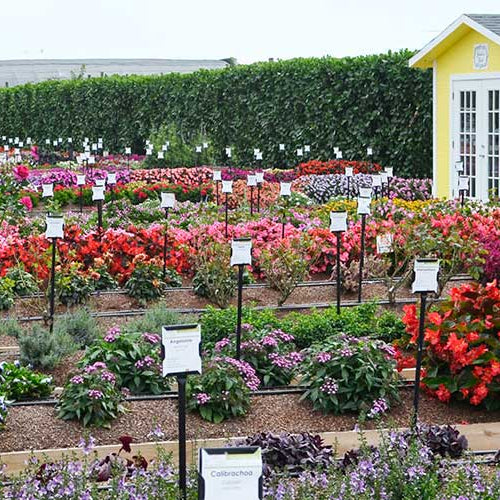 As fragrant as it is beautiful, lavender is a joy to grow in the landscape. All types produce gorgeous, nectar rich blue, pink, purple or white flowers that butterflies and bees flock to. And even when the plants are not in bloom, they show off lovely, lacy blue green foliage that looks great from spring till fall. Lavender also makes an ideal companion for annual flowers in large containers or tubs.
As fragrant as it is beautiful, lavender is a joy to grow in the landscape. All types produce gorgeous, nectar rich blue, pink, purple or white flowers that butterflies and bees flock to. And even when the plants are not in bloom, they show off lovely, lacy blue green foliage that looks great from spring till fall. Lavender also makes an ideal companion for annual flowers in large containers or tubs.
The key to success with lavender lies in knowing what type you have. These plants come in a number of different species that vary in their cold or heat tolerance.
English lavenders which are in the angustifolia family are more cold tolerant than other types, and will survive over the winter as far north as Zone 5 and south to Zone 8. They develop beautiful wands of bloom that stand out above the mounding foliage. They just won’t tolerate hot, humid conditions common in more southern climates. Some great varieties include: Hidcote, Blue Scent, Ellegance Pink, Hidcote, Elegance Purple, Munstead, Super Blue, and Platinum Blonde.
Spanish lavenders that are members of the stoechas family are just as spectacular as their English neighbors, but they often have more crown-like blossoms held on tall, wiry stems. Spanish lavenders thrive in hotter climates than the English types, and will grow best in zones 7-9. Some terrific choices include: Anouk Spanish, Luxurious Spanish, Mulberry Ruffles, Silver Anouk, Winter Lace Spanish, and With Love Spanish.
And, of course, to make matters a bit more confusing, there are a lot of new hybrids that have characteristics of both types. That’s why you should always read the plant label before buying lavender to find its zone of hardiness. But, remember, even if your lavender doesn’t survive the seasons, it still makes an amazing statement in borders and containers.
All types of lavender have the same growing requirements. They need full sun, at least 6 to 8 hours per day, and quick-draining soil. Lavender hates wet ground and will fold its tent if it’s forced to grow in thick, mucky soil. When I planted English lavender in my Iowa garden I did not have any luck until i added a liberal amount of sand to the soil around them. Before that, the plants would survive, but would never come back the following spring. They just needed better drainage.
Lavender is drought tolerant, so only add water when the soil feels dry to the touch. Otherwise, lavender is pretty fuss free with few insect or disease problems and its deer and rabbit resistant.
Written by Doug Jimerson

















